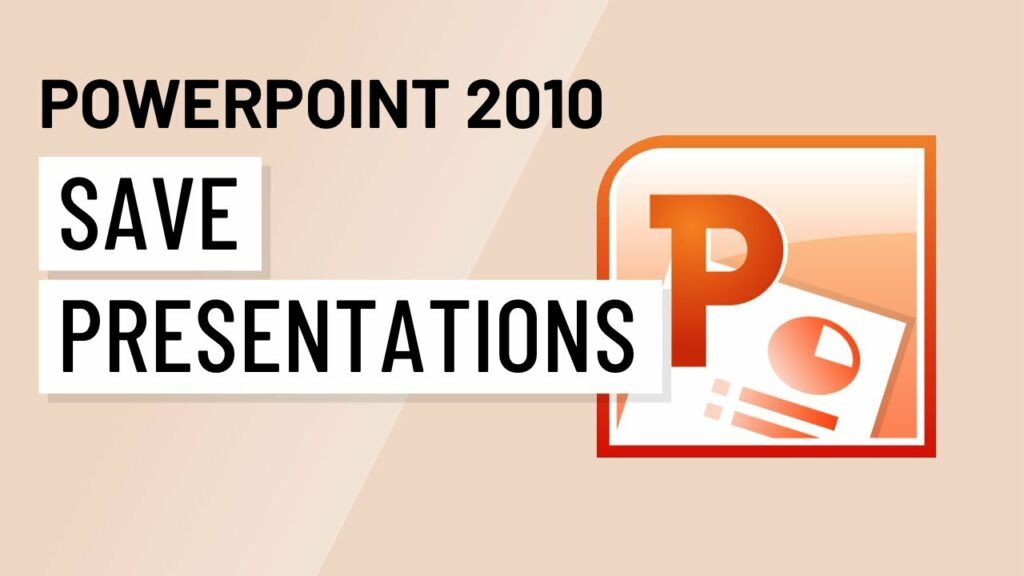Comprehensive Guide to Saving and Printing in PowerPoint 2010

Introduction:
Saving and printing are essential aspects of creating and sharing presentations in Microsoft PowerPoint 2010. Properly saving your work ensures that your progress is preserved, while printing allows you to distribute physical copies for offline viewing and reference. In this comprehensive guide, we will delve into the intricacies of saving and printing in PowerPoint 2010, covering everything from saving in different formats to configuring print settings for optimal results.
Section 1: Saving Presentations in PowerPoint 2010
1.1 Saving Your Presentation: To save a presentation in PowerPoint 2010, follow these steps:
- Click on the File tab in the Ribbon toolbar.
- Select Save As or Save from the menu options.
- Choose the location where you want to save the presentation.
- Enter a name for the file in the File Name field.
- Click Save to save the presentation.
1.2 Save Formats: PowerPoint 2010 offers various formats for saving presentations, each serving different purposes:
- PowerPoint Presentation (.pptx): The default format for saving editable presentations.
- PowerPoint Template (.potx): A template format for creating reusable presentation designs.
- PowerPoint Show (.ppsx): A format for saving presentations that open directly in slideshow mode.
1.3 AutoSave and Recovery: PowerPoint 2010 includes an AutoSave feature that automatically saves your work at regular intervals to prevent data loss in case of unexpected interruptions, such as power outages or system crashes. Additionally, PowerPoint’s AutoRecover feature periodically saves temporary copies of your presentation, allowing you to recover unsaved changes in the event of a crash or closure without saving.
Section 2: Printing Presentations in PowerPoint 2010
2.1 Printing Your Presentation: To print a presentation in PowerPoint 2010, follow these steps:
- Click on the File tab in the Ribbon toolbar.
- Select Print from the menu options.
- Adjust print settings as needed in the Print dialog box.
- Click Print to send the presentation to the printer.
2.2 Print Settings: PowerPoint 2010 offers a range of print settings that allow you to customize the appearance and layout of printed presentations:
- Printer Selection: Choose the desired printer from the list of available printers.
- Print Range: Specify the range of slides to print, such as All Slides, Current Slide, or a custom range.
- Copies: Determine the number of copies to print.
- Color or Grayscale: Select whether to print in color or grayscale.
- Handouts: Choose the number of slides per page for handout printing.
- Print Quality: Adjust print quality settings for optimal results.
2.3 Print Preview: Before printing, use the Print Preview feature in PowerPoint 2010 to preview how the presentation will appear when printed. Print Preview allows you to review the layout, formatting, and content of each slide, ensuring that everything looks as intended before sending it to the printer.
Section 3: Best Practices for Saving and Printing in PowerPoint 2010
3.1 Regularly Save Your Work: Get into the habit of saving your work frequently to avoid losing progress in case of unexpected interruptions. Use the AutoSave feature in PowerPoint 2010 to automatically save changes at regular intervals, minimizing the risk of data loss.
3.2 Use Descriptive File Names: When saving presentations, use descriptive file names that accurately reflect the content and purpose of the presentation. This makes it easier to identify and locate specific presentations later on, especially when working with multiple files.
3.3 Optimize Printing Settings: Before printing presentations, take the time to optimize print settings for the best results. Adjust settings such as print quality, color mode, and paper size to ensure that printed presentations meet your expectations in terms of appearance and readability.
3.4 Proofread Before Printing: Before printing presentations, thoroughly proofread the content to catch any errors or inconsistencies that may detract from the professionalism of printed materials. Correct spelling, grammar, and formatting issues to ensure that printed presentations are polished and error-free.
Conclusion:
Saving and printing are integral aspects of creating and sharing presentations in PowerPoint 2010. By understanding the various saving formats, utilizing AutoSave and recovery features, and optimizing print settings, users can effectively preserve their work and produce high-quality printed materials. Whether sharing presentations digitally or distributing physical copies, PowerPoint 2010 provides the tools and features necessary to save and print presentations with ease and efficiency. With proper practices and attention to detail, users can ensure that their presentations are accurately saved and printed, facilitating effective communication and collaboration in various contexts.





